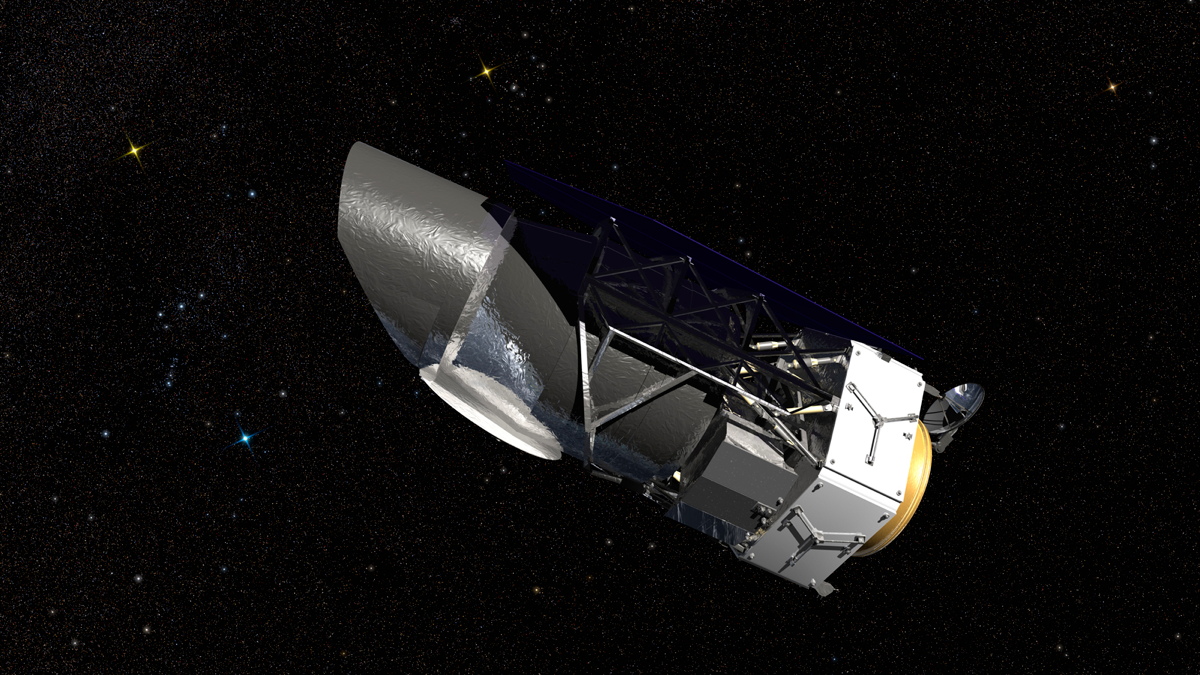NASA Will Use Repurposed Spy Telescope for Wide-Sky Survey
NASA is ready to move forward on a new telescope that will have 100 times the field of view of the Hubble Space Telescope and will use old spy-telescope hardware.
The new mission, called the Wide Field Infrared Survey Telescope (WFIRST), is expected to launch in the mid-2020s. It will aim to help scientists better understand dark energy, dark matter, planets around other stars and the universe's evolution. NASA announced the WFIRST telescope with a new video to unveil the mission.
The WFIRST mission has been in preparatory studies for years. It received increased public attention when the National Reconnaissance Office (a U.S. intelligence agency) made the surprise decision to give NASA two Hubble-class spy telescopes in 2012, which fit the mission's parameters. On Wednesday, (Feb. 17), NASA's Agency Program Management Council made the ultimate decision to pursue the WFIRST program, according to a statement.
"WFIRST has the potential to open our eyes to the wonders of the universe, much the same way Hubble has," said John Grunsfeld, veteran Hubble repair astronaut and the associate administrator of NASA's Science Mission Directorate, in the statement.
"This mission uniquely combines the ability to discover and characterize planets beyond our own solar system with the sensitivity and optics to look wide and deep into the universe in a quest to unravel the mysteries of dark energy and dark matter," Grunsfeld said.
WFIRST will be NASA's next major observatory after the James Webb Space Telescope, which is expected to launch in 2018 — a few years before Hubble's expected retirement. WFIRST's mission will be to look at large swaths of the sky in near-infrared light.
The space-based observatory will probe the nature of dark energy (the force believed to be speeding up the expansion of the universe) and dark matter (an invisible substance that is responsible for most of the mass in the universe). Additionally, by using certain kinds of supernovas to measure distance, WFIRST will track how fast the universe is expanding. The instrument's observations of galaxies will give scientists a picture of how the universe evolved, according to the statement from NASA.
Breaking space news, the latest updates on rocket launches, skywatching events and more!
WFIRST's instruments include a wide-field instrument, which will do these surveys, as well as a coronagraph, which will help search for exoplanets. The coronagraph can block the light of a star, letting astronomers search for the star's dimmer, planetary companions.
WFIRST will also probe the atmospheres of these planets, which is an emerging subfield of exoplanet studies. NASA said it hopes the telescope will be able to better characterize large planets and super-Earths, the latter of which are between the sizes of Earth and Uranus. Some scientists believe super-Earths could be habitable.
After the telescope launches, it is expected to operate in L2, which is located far from the interference of Earth's atmosphere. That spot is 1 million miles (1.6 million kilometers) from the Earth, opposite the direction of the sun, and is a relatively stable gravitational location for WFIRST to do observations.
Follow Elizabeth Howell @howellspace. Follow us @Spacedotcom, Facebook and Google+. Original article on Space.com.

Elizabeth Howell (she/her), Ph.D., was a staff writer in the spaceflight channel between 2022 and 2024 specializing in Canadian space news. She was contributing writer for Space.com for 10 years from 2012 to 2024. Elizabeth's reporting includes multiple exclusives with the White House, leading world coverage about a lost-and-found space tomato on the International Space Station, witnessing five human spaceflight launches on two continents, flying parabolic, working inside a spacesuit, and participating in a simulated Mars mission. Her latest book, "Why Am I Taller?" (ECW Press, 2022) is co-written with astronaut Dave Williams.

